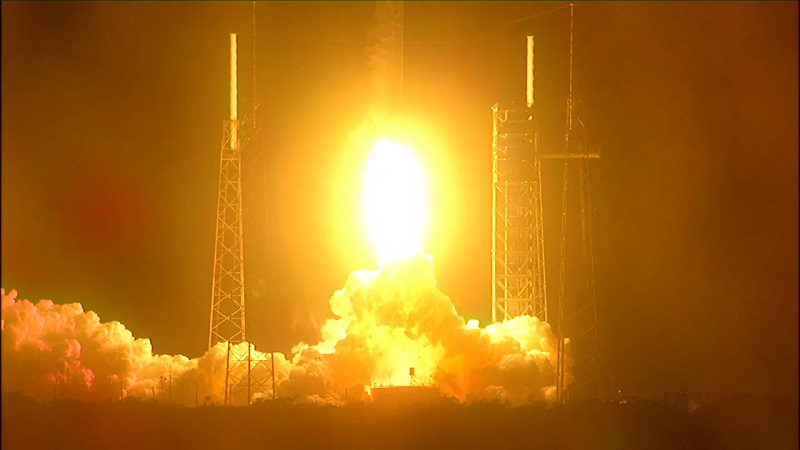In an event that could have been directed by Mother Nature herself, NASA’s latest climate mission, dubbed PACE, took to the heavens at 1:33 a.m. EST, atop a SpaceX Falcon 9 rocket, making a splash in the cosmos rather than the ocean. The Plankton, Aerosol, Climate, ocean Ecosystem (PACE) satellite embarked on its celestial voyage from the Space Launch Complex 40 at Cape Canaveral Space Force Station in Florida, with NASA confirming a successful handshake with the satellite just five minutes post-launch. The spacecraft is reported to be in tip-top shape, performing exactly as anticipated in the vast expanse above.

Bill Nelson, NASA Administrator, couldn’t hide his excitement, praising the PACE team for their stellar achievement. He highlighted how PACE is set to revolutionize our understanding of the microscopic tenants of our oceans and atmosphere, contributing significantly to the Biden-Harris Administration’s climate crusade. By peering down from its orbital perch, PACE aims to uncover the minuscule, yet mighty forces driving global warming.
This high-flying laboratory is not just any satellite; it’s equipped with a hyperspectral ocean color instrument that promises an unprecedented view of our planet’s waters. For the first time from space, scientists will daily identify the various communities of phytoplankton on a global scale, shining a light on the health of our fisheries, tracking menacing algal blooms, and spotting shifts in marine ecosystems.
Not to be outdone, PACE also boasts two polarimeter instruments, designed to dissect how sunlight dances with particles in our atmosphere. This will offer fresh insights into atmospheric aerosols, cloud properties, and air quality from the local to the global stage.
Karen St. Germain, NASA’s Earth Science Division Director, anticipates that PACE’s observations will propel our understanding of the ocean’s climatic dance moves to new heights. She envisions a synergistic future where PACE data melds with other missions, heralding a golden age of ocean science. The mission promises to be a treasure trove of open-source data, eagerly awaited by scientists and coastal managers alike, ready to tackle the evolving challenges faced by our coastal communities and industries.
Marjorie Haskell, PACE’s program executive, reflected on the journey to launch, a testament to the team’s resilience and passion, which remained undampened even by the global pandemic. This sentiment is echoed by Jeremy Werdell, PACE project scientist, who after two decades of dreaming, now watches the mission unfold into reality, brimming with the potential for discoveries yet unimagined.
As PACE settles into its new home among the stars, its mission is clear: to cast a watchful eye over Earth’s vast oceans, decoding the secrets of phytoplankton and their role in the global carbon cycle, and by extension, the broader impacts of climate change on our blue planet. This mission is not just about exploration; it’s about understanding our home, safeguarding our resources, and ensuring food security for future generations. With PACE, NASA reaffirms its commitment to delivering actionable science, one satellite launch at a time.







